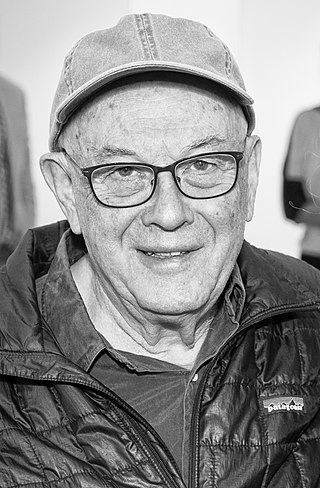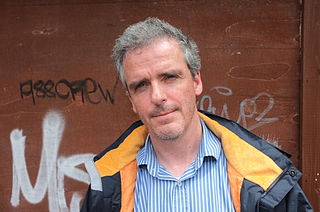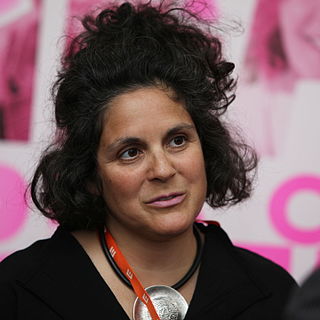Robert Frank was a Swiss American photographer and documentary filmmaker. His most notable work, the 1958 book titled The Americans, earned Frank comparisons to a modern-day de Tocqueville for his fresh and nuanced outsider's view of American society. Critic Sean O'Hagan, writing in The Guardian in 2014, said The Americans "changed the nature of photography, what it could say and how it could say it. [ ... ] it remains perhaps the most influential photography book of the 20th century." Frank later expanded into film and video and experimented with manipulating photographs and photomontage.
William Eggleston is an American photographer. He is widely credited with increasing recognition for color photography as a legitimate artistic medium. Eggleston's books include William Eggleston's Guide (1976) and The Democratic Forest (1989).

Juergen Teller is a German fine-art and fashion photographer. He was awarded the Citibank Prize for Photography in 2003 and received the Special Presentation International Center of Photography Infinity Award in 2018.
Joel Sternfeld is an American fine-art photographer. He is best known for his large-format color pictures of contemporary American life and identity. His work contributed to the establishment of color photography as a respected artistic medium. Furthering the tradition of roadside photography started by Walker Evans in the 1930s, Sternfeld documents people and places with unexpected excitement, despair, tenderness, and hope. Ever since the 1987 publication of his landmark “American Prospects,” Sternfeld’s work has interwoven the conceptual and political, while being steeped in history, landscape theory and his passion for the passage of the seasons. Sternfeld’s is a beautiful and sad portrait of America - ironic, lyrical, unfinished, seeing without judging.

Henry Wessel was an American photographer and educator. He made "obdurately spare and often wry black-and-white pictures of vernacular scenes in the American West".

Bruce Landon Davidson is an American photographer. He has been a member of the Magnum Photos agency since 1958. His photographs, notably those taken in Harlem, New York City, have been widely exhibited and published. He is known for photographing communities that are usually hostile to outsiders.

Mitchell Epstein is an American photographer. His books include Vietnam: A Book of Changes (1997); Family Business (2003), which won the 2004 Kraszna-Krausz Photography Book Award; Recreation: American Photographs 1973–1988 (2005); Mitch Epstein: Work (2006); American Power (2009); Berlin (2011); New York Arbor (2013); Rocks and Clouds (2018); Sunshine Hotel (2019); In India (2021); and Property Rights (2021).

Manufactured Landscapes is a 2006 Canadian documentary film about the industrial landscape photography of Edward Burtynsky. It was directed by Jennifer Baichwal and is distributed by Zeitgeist Films. It was the first of three documentary collaborations between Baichwall and Burtynsky, followed by Watermark in 2013 and Anthropocene: The Human Epoch in 2018.

Donovan Wylie is a Northern Irish photographer, based in Belfast. His work chronicles what he calls "the concept of vision as power in the architecture of contemporary conflict" – prison, army watchtowers and outposts, and listening stations – "merging documentary and art photography".
Arnaud Maggs was a Canadian artist and photographer. Born in Montreal, Maggs is best known for stark portraits arranged in grid-like arrangements, which illustrate his interest in systems of identification and classification.

Saul Leiter was an American photographer and painter whose early work in the 1940s and 1950s was an important contribution to what came to be recognized as the New York school of photography.
Mark Haworth-Booth is a British academic and historian of photography. He was a curator at the Victoria & Albert Museum in London from 1970 to 2004.

Jennifer Baichwal is a Canadian documentary filmmaker, writer and producer.
Moyra Davey is an artist based in New York City. Davey works across photography, video, and writing.

Anthropocene: The Human Epoch is a 2018 Canadian documentary film made by Jennifer Baichwal, Nicholas de Pencier and Edward Burtynsky. It explores the emerging concept of a geological epoch called the Anthropocene, defined by the impact of humanity on natural development.
Mark Ruwedel is an American landscape photographer and educator.
Russell Lord is an American writer and curator working in the field of photography and the history of art. He is currently the Director of Exhibitions and Curatorial Initiatives at the American Federation of Arts. Previously he served as the Freeman Family Curator of Photographs, Prints, and Drawings at the New Orleans Museum of Art, a position he held from October 2011 to April 2023.
Maia-Mari Sutnik, was the first Curator of the Curatorial Department of Photography at the Art Gallery of Ontario in Toronto.
Robert Burley is a Canadian photographer of architecture and the urban landscape. He is based in Toronto, Canada, and is a Fellow of the Royal Society of Canada.
Sophie Hackett is the Curator of Photography at the Art Gallery of Ontario, Toronto.










